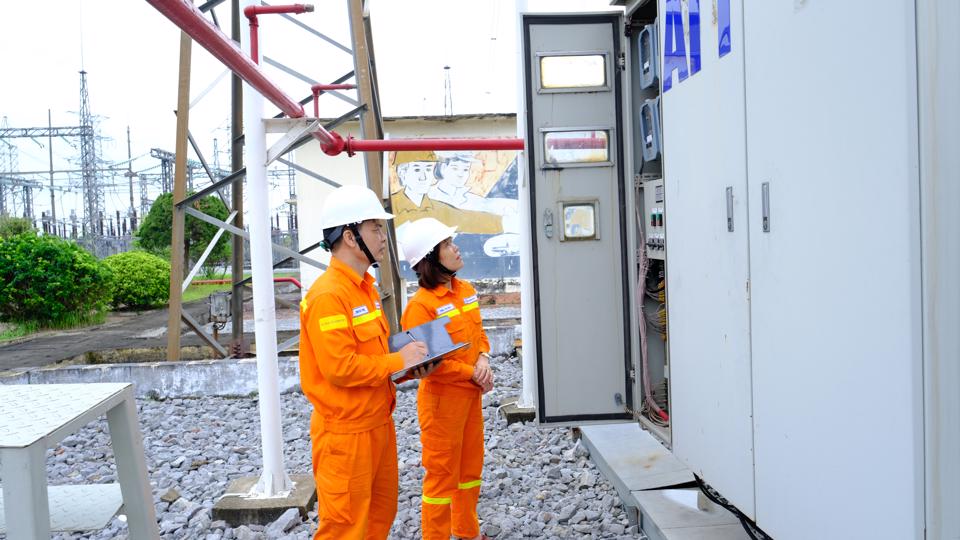Vietnamese Gov’t approves Power Development Plan VIII
According to the plan, renewable energy sources will account for a significant share of the energy mix, ranging from 67.5% to 71.5% by 2050.
The Government of Vietnam has approved the country's Power Development Plan for 2021-2030, with a vision to 2045 (PDP VIII).
| A grid station in Thanh Hoa. Photo: Khac Kien/The Hanoi Times |
The PDP VIII outlines a comprehensive strategy to develop power sources and transmission grids with voltages of 220 kV or higher, with a special focus on renewable and new energy sectors within the territory of Vietnam.
The plan also includes the establishment of connections between the national power grid and neighboring countries.
"Recognizing the importance of electricity as a vital infrastructure sector, the development of power systems must always be one step ahead and serve as the foundation for rapid and sustainable national progress," the plan states.
This is particularly important as Vietnam strives to build an independent and self-reliant economy, raise the standard of living of its people, and ensure defense security.
In line with global advances in science and technology, electricity development must closely follow emerging trends, especially renewable energy and new energy sources. This approach is closely linked to the process of transforming the country's economy into a green, circular and low-carbon model. The energy transition should be in line with international trends and ensure sustainability, fairness and equity.
The government places great emphasis on investing in and promoting the rapid development of the electricity industry. It adopts the principle of healthy competition and applies a market mechanism for electricity pricing, ensuring a balance of interests between investors and electricity users, while meeting the development needs of different regions.
PDP VIII sets out key objectives, including national energy security, ensuring that the country's electricity needs are met, and supporting socio-economic development goals.
These objectives are consistent with an average annual GDP growth rate of about 7% from 2021 to 2030 and about 6.5-7.5% from 2031 to 2050. A key aspect is ensuring a safe and reliable supply of electricity.
By 2030, Vietnam aims to rank among the top four countries in ASEAN in terms of power supply reliability, and among the top three countries in the region in terms of electricity access index.
It also aims to have 50% of office buildings and 50% of residential buildings using rooftop solar power for their own consumption by 2030, contributing to local energy production and reducing dependence on the national grid.
Renewable energy to make up 40% of total energy mix
Another key objective of PDP VIII is to foster a just energy transition process by prioritizing the robust development of renewable energy sources for electricity generation.
The plan envisages a significant share of renewable energy in the energy mix, reaching nearly 40% by 2030 and from 67.5% to 71.5% by 2050. To mitigate environmental impacts, the plan aims to effectively control greenhouse gas emissions from power generation, targeting a range of about 204-254 million tons by 2030 and about 27-31 million tons by 2050.
In addition, the plan aims to achieve a peak emission level of no more than 170 million tons by 2030 to meet commitments made by international partners under the Just Energy Transition Partnership (JETP).
To support the integration and optimal operation of large-scale renewable energy sources, the PDP VIII also emphasizes the establishment of a smart grid system to ensure efficient and secure electricity transmission.
In addition, it sets a goal to increase electricity export capacity, aiming to reach approximately 5,000-10,000 MW by 2030. This target reflects a commitment to expand the country's ability to export electricity to neighboring regions.
To achieve the stated goals, it is estimated that the total investment needed to develop power sources and transmission networks from 2021 to 2030 will amount to approximately $134.7 billion.
Looking ahead to the period from 2031 to 2050, the estimated investment capital for power source and transmission grid development ranges from $399.2 billion to $523.1 billion. Of this, investment in power sources is estimated to be about $364.4 billion to $511.2 billion, while investment in the transmission grid is estimated to be about $34.8 billion to $38.6 billion.
The Ministry of Industry and Trade will take the lead in working with relevant ministries, departments, and local authorities to submit the revised Electricity Law and the Renewable Energy Law to the government before they are discussed at the National Assembly in 2024.
In addition, the Ministry will propose policies for the direct purchase and sale of electricity, while working closely with investors and conducting a thorough review of legal provisions, commitments and agreements among all parties involved to address any challenges faced by ongoing projects.
Overall, these measures aim to ensure a sound regulatory framework, promote investment and address implementation issues to support the successful realization of the PDP VIII goals.



![[Net-zero strategy] Vietnam's electricity plan drives away offshore wind power](https://cdn-media.hanoitimes.vn/2021/09/30/WIND2.jpg?w=480&h=320&q=100)









